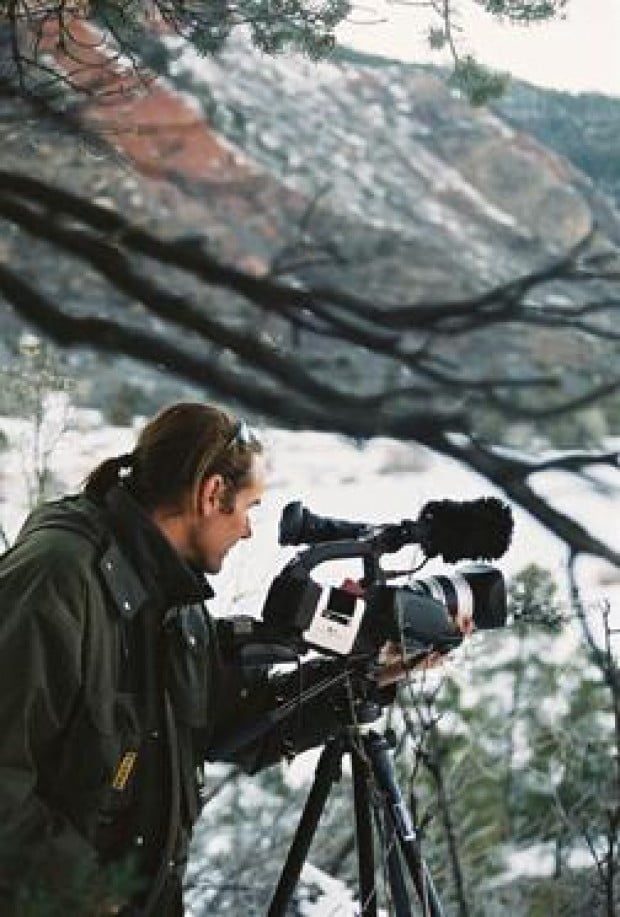
The “peace and unity” ride became an annual event, exorcising a century of unresolved grief and calling Lakota youth to roots they had forgotten.
By Melonie Magruder / Special to The Malibu Times
On a blustery cold morning in late December of 1890, the U.S. Army’s 7th Cavalry rounded up several hundred members of the Lakota nation next to a frozen little creek at Wounded Knee, S.D. and slaughtered them, primarily women, children and old people.
This was essentially the closing chapter of the white Europeans’ conquering of the American West and a symbolic curtain to the epic drama of a people who were the first inhabitants of North America.
The remains of the Lakota nation were shunted onto reservations, where the last seven generations have seen loss of community, health and spirit, decimated by alcoholism and crippling economic circumstance.
In 1990, 100 years after the massacre at Wounded Knee, a group of Lakota descendants decided to commemorate that fateful day and connect to their spiritual ancestry by taking a ride.
Starting at McLaughlin, S.D., the site where tribal chief Sitting Bull was assassinated by U.S. Army officers, south to Wounded Knee almost 350 miles, a modern-day band of Lakota rode horses in freezing weather conditions that replicated what their ancestors had endured a century before.
“Spirit Riders: Mending the Sacred Hoop,” a documentary made by Malibu resident James Kleinert, and narrated by Peter Coyote, chronicles this journey.
“This first ride was called the ‘Wiping of the Tears’ ride,” Kleinert said. “It was an effort to acknowledge the huge spiritual trauma their people had suffered and re-connect with the voice of their ancestors.”
The ride has become an annual event, exorcising a century of unresolved grief and calling Lakota youth to roots they had forgotten. As Birgil L. Killstraight, a Lakota spiritual advisor, said in the film, “On horseback, you have that close connection to life around you.”
Annette Lee, a seventh generation rider, said in the film, “When we sit on the horse in the ceremony, the horse carries our bodies, but they also carry our prayers and our spirits.”
The Lakota invite anyone to join them in their rides, convinced the journey replenishes scarred souls and reconnects one to the earth.
“These rides are very difficult,” Kleinert said. “It’s the middle of winter, it’s freezing cold, it’s 18 long days in the saddle. But I’ve seen miracles happen.”
The director spoke of one family who has taken part in the spirit rides and whose son was born with severe Fetal Alcohol Syndrome. “Over five or six years, I witnessed the healing of this boy.
“When you go on a tough ride like that, you end up bonding to those around you,” Kleinert added. “The kids that take part in these rides are more likely to stay in school, graduate, get jobs, stay sober. It’s horse therapy, but a lot more.”
Kleinert has been riding with the Lakota and working on the documentary for 12 years. HBO has been using it as a companion piece to its recent series “Bury My Heart At Wounded Knee.” A clip of “Spirit Riders” found on the HBO Web site shows sweeping views of beautiful, vast landscapes with the group of riders looking like natural features of the panorama.
Lakota territory at one time extended from the Mississippi River to Wyoming, north to Canada and south to Nebraska. Now, the Lakota live in seven reservations found mostly in the Dakotas. “Pine Ridge, South Dakota is one of the poorest counties in the country,” Kleinert said. “Many of these people live in extreme poverty, but their spirit is enormous.”
The spirit rides have been such a success that the Lakota have begun Summer Solstice rides as well. “They ride to sacred sites like Grey Horn Butte that the Lakota consider to be energy vortexes, where their ancestors gathered and prayed,” Kleinert said. “It’s an extraordinary story of a grassroots movement about healing.”
“Spirit Riders” was featured at last year’s Malibu Celebration of Film and has won several awards at film festivals nationwide. Kleinert is executive director of the Spirit Riders Foundation, a non profit organization providing funds for the yearly spirit rides. “All profits from the documentary go to the Foundation to help continue their spirit rides,” he said, including warm clothes, sleeping bags, tack, gear and horse transport.
Kleinert is now working on another documentary titled, “The American Wild Horse,” which tells about the systematic disappearance of native horse species, due to diminishing grazing lands and efforts to end the endangered species protections afforded American mustangs and burros.
“I’ll be screening my film for Congress in September,” Kleinert said. “Hopefully, it will resonate so they take action to protect another symbol of our history.”
As Floyd Red Crow Westerman narrates in “Spirit Riders”: “Many traditional Lakota believe that peace with all people and true harmony with the environment are not only possible, but necessary for the future of life on earth. Each part of creation is connected to all other parts and to the whole.”